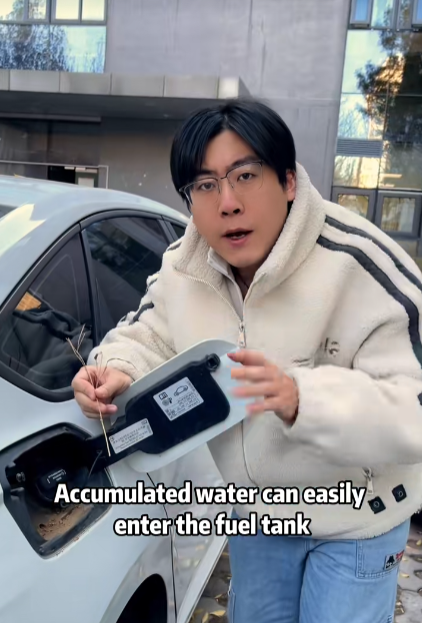
You’ve filled up your car’s gas tank more times than you can count. You twist off the fuel cap, top up the tank, and tighten it back with a few clicks. It’s a routine task that takes only a minute. But what if we told you there’s more to that little fuel cap than meets the eye? It might look like a simple plastic or metal cover, but the fuel tank cap has a fascinating history, engineering purpose, and a few secrets that many drivers overlook. Let’s take a deep dive into what really goes on behind that humble lid.
The Purpose Behind the Cap
At first glance, the fuel tank cap seems to serve just one basic function: keeping fuel inside the tank. But in reality, it does much more. It plays a vital role in maintaining fuel system pressure, preventing fuel vapor leaks, and keeping contaminants like dust and moisture out. The modern fuel cap is part of a vehicle’s emissions control system and directly affects the performance and efficiency of your engine.
The cap is designed to seal tightly to avoid fuel vapors escaping into the atmosphere. These vapors are not only flammable but also contribute to air pollution. That’s why your car’s onboard diagnostics system (OBD-II) monitors fuel cap integrity — if it’s loose or faulty, the check engine light might come on.
The “Click” Isn’t Just for Fun
Every time you tighten your gas cap and hear it “click,” that sound means something important: the cap has reached the proper torque level to create a secure seal. Most modern fuel caps are built with a ratcheting mechanism that produces a clicking noise when you tighten it enough. Ignoring that click can lead to fuel vapors leaking out, reducing fuel efficiency, and triggering a check engine light. So next time, don’t rush it — wait for the click!

Secret #1: It’s a Pressure Regulator
One of the lesser-known secrets about fuel caps is that they act as miniature pressure regulators. Fuel tanks build up pressure due to temperature changes and fuel vapor expansion. The cap is designed with a one-way valve system that helps regulate this pressure, ensuring that it doesn’t get too high or too low. Without this regulation, excess pressure could damage the fuel system or impair fuel delivery to the engine.
Some advanced fuel caps have dual valves — one for vacuum release and another for pressure relief. These mechanisms help maintain the delicate balance needed for your vehicle to function efficiently.
Secret #2: A Loose Cap Can Cost You
Many drivers don’t realize that a loose or missing fuel cap can affect fuel economy and cost money over time. When the cap isn’t tightly sealed, fuel vapors escape. That means your car loses valuable gasoline without even driving. It’s estimated that a faulty or missing fuel cap can allow up to 30 gallons of gasoline to evaporate each year.
Besides fuel loss, a loose cap can also cause your check engine light to turn on, potentially leading to unnecessary trips to the mechanic. Diagnosing and resetting the system can cost both time and money — all for something that could have been prevented with a properly sealed cap.
Secret #3: Your Car Might Not Even Have One
Surprisingly, not all modern cars come with a traditional fuel tank cap anymore. Some manufacturers, like Ford and BMW, have introduced capless fuel systems. Instead of unscrewing a cap, you simply push the nozzle into the tank filler. A built-in spring-loaded flap seals the fuel system automatically when the nozzle is removed. This design helps reduce fuel vapor escape, prevents over-tightening, and improves user convenience.
However, while capless systems seem foolproof, they require specific fuel nozzles and can be sensitive to contaminants. Using the wrong type of fuel nozzle or trying to refuel from a gas can without an adapter can cause issues.

Secret #4: Anti-Theft and Anti-Tampering Features
Fuel theft, though less common today, is still a concern in some regions. Some fuel caps come with locking mechanisms that require a key to open. These lockable fuel caps not only protect your fuel from theft but also prevent tampering or contamination. Some versions even include alarms or tamper indicators that alert the driver when the cap has been disturbed.
There are also fuel caps equipped with RFID or digital tracking features for fleet vehicles, ensuring that the right fuel goes into the right vehicle and providing data logs for commercial fuel usage.
Secret #5: Environmental Impact
Gasoline vapors contain volatile organic compounds (VOCs), which contribute to smog and ground-level ozone pollution. That’s why proper fuel system sealing is required by environmental regulations in many countries. A damaged or improperly sealed cap can allow VOCs to leak into the air, contributing to air quality issues and failing emissions tests.
In fact, the U.S. Environmental Protection Agency (EPA) once reported that roughly 147 million gallons of fuel evaporate into the atmosphere annually due to faulty or missing gas caps. That’s a shocking number — and something so small has a big environmental impact.

Taking Care of Your Fuel Cap
Now that you know the secrets behind the fuel tank cap, here’s how to take good care of it:
- Always tighten until it clicks. That click ensures a proper seal.
- Inspect the rubber gasket. A cracked or worn gasket can lead to leaks.
- Replace if damaged. A new cap is inexpensive and prevents future headaches.
- Use the correct cap. Not all caps are the same — use the one recommended for your vehicle.
- Clean the filler neck. Dirt and grime can prevent a proper seal.
And if your car has a capless fuel system, be sure to use approved adapters when refueling with a can, and keep the entry flap free from dirt or debris.
A Small Piece, A Big Role
Who would have thought that the small, often-overlooked fuel tank cap plays such a big role in your vehicle’s performance, fuel economy, and environmental responsibility? It’s not just a lid — it’s a vital part of your car’s ecosystem.
Next time you refuel, take a moment to appreciate that little cap. It works hard behind the scenes to save you money, keep your engine running smoothly, and protect the planet. Now you’re in on the secret — and maybe, just maybe, you’ll look at your fuel cap a little differently from now on.



